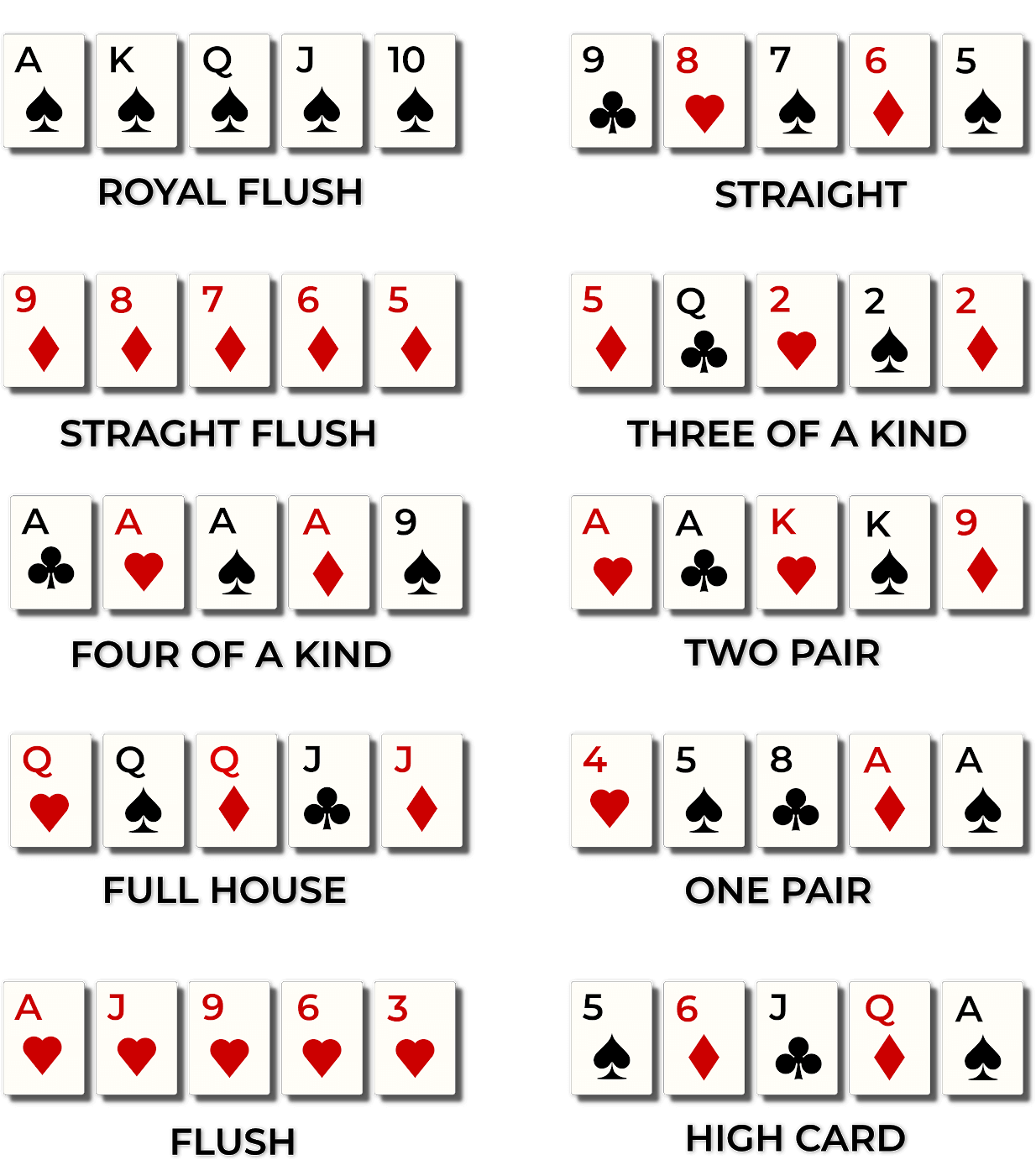Poker Hands Ranking Probability

Poker Hand Ranking Printable
Mark Brader has provided the following tables of probabilities of the various five-card poker hands when five cards are dealt from a single 52-card deck, and also when using multiple decks.

The hands are listed in descending order of probability, which could be used as the basis for their ranking order in multi-deck poker variations. It can be seen that as the number of decks increases, flushes become easier to make than straights, and sets of equal cards become more common. What are the Probabilities of the Best Poker Hands? If you’ve ever watched a movie in which people play texas holdem poker, it seems like the best hands — full houses, royal flushes, and four of a kind — just seem to pop up all over the place. The truth is that they are extremely rare — so let’s take a look at some of the real odds for some of the best poker hands.
Texas Holdem Heads-Up Preflop Odds. This table was created by enumerating through every possible board and opponent hole card combination for each of the 169 texas holdem preflop starting hands.
The traditional hand types are described on the poker hand ranking page. These include one hand that belongs to two types at once - a straight flush is both a straight and a flush. With two or more decks, it is possible for other combinations to occur, such as a hand that has both a flush and a pair (such as 4-6-6-8-9 all of one suit). The left-hand tables include these composite hand types for multiple decks; in these tables 'plain' means a hand that is not a flush.
The hands are listed in descending order of probability, which could be used as the basis for their ranking order in multi-deck poker variations. It can be seen that as the number of decks increases, flushes become easier to make than straights, and sets of equal cards become more common.


Here is the Perl program that produced the tables. Mark Brader has placed both the program and the tables in the public domain.
Poker Ranking Of Hands
The truth is that they are extremely rare — so let’s take a look at some of the real odds for some of the best poker hands. A Loot at the Best Poker Hands and their Probabilities Before we look at some of the really rare poker hands, let’s start out with a basic pair. Probabilities of Poker Hands Each of the 2,598,960 possible hands of poker is equally likely when dealt 5 cards from a standard poker deck. Because of this, one can use probability by outcomes to compute the probabilities of each classification of poker hand. The binomial coefficient can be used to calculate certain combinations of cards.
Poker may be the best-known card game, and if you’re going to play, you need to know how the hands rank. The following details the various Poker hands from the highest-ranking to lowest, along with the odds of catching such a hand:
Poker Hand Rankings Chart
Royal straight flush: The top five cards (A-K-Q-J-10) in one of the four suits. Odds: 650,000 to 1.
Straight flush: Any sequence of five cards from the same suit (such as the 2-3-4-5-6 of clubs). If two players have straight flushes on the same hand, the higher sequence outranks the lower one. Odds: 75,000 to 1.
Four of a kind: Four of any one card; the fifth card in the hand can be anything. If two players have four of a kind at the same time, the rank of the four cards determines the better hand. If two players have equal ranked quads, the rank of the fifth card determines who wins. Odds: 4,150 to 1.
Full house: Three of a kind matched with a pair — for example, three 10s and two 9s. If two players both have a full house, the higher three of a kind determines the better hand. Odds: 700 to 1.
Flush: Five cards of the same suit, no sequence required. When two players have flushes, the highest card in each flush determines the better hand; if the top cards are the same, you look at the second card, and so on. Odds: 500 to 1.
Straight: Five cards of consecutive rank (in numerical sequence) in any suit. If two players have straights, the top card of the straight determines the winner. Odds: 250 to 1.
Three of a kind: Also knows as triplets, trips, or a set, this hand consists of three cards of the same numeric value, together with two unmatched cards. The higher-ranking three of a kind wins. Odds: 47 to 1.
Two pair: Four cards in two pairs with an unmatched fifth card. Ties are broken by the value of the top pair, followed by the value of the second pair, and finally by the spare card. Odds: 20 to 1.
One pair: One pair with three unmatched cards is the second-lowest hand. The rank of the pair, followed by the unmatched cards, splits the tie. Odds: 2 to 5.
High card: The weakest hand, high card means you have five unmatched cards. The top card in the hand determines the better collection. If two hands tie, such as two hands with ace-high, you move to the second card, and so on. Odds: 1 to 1.